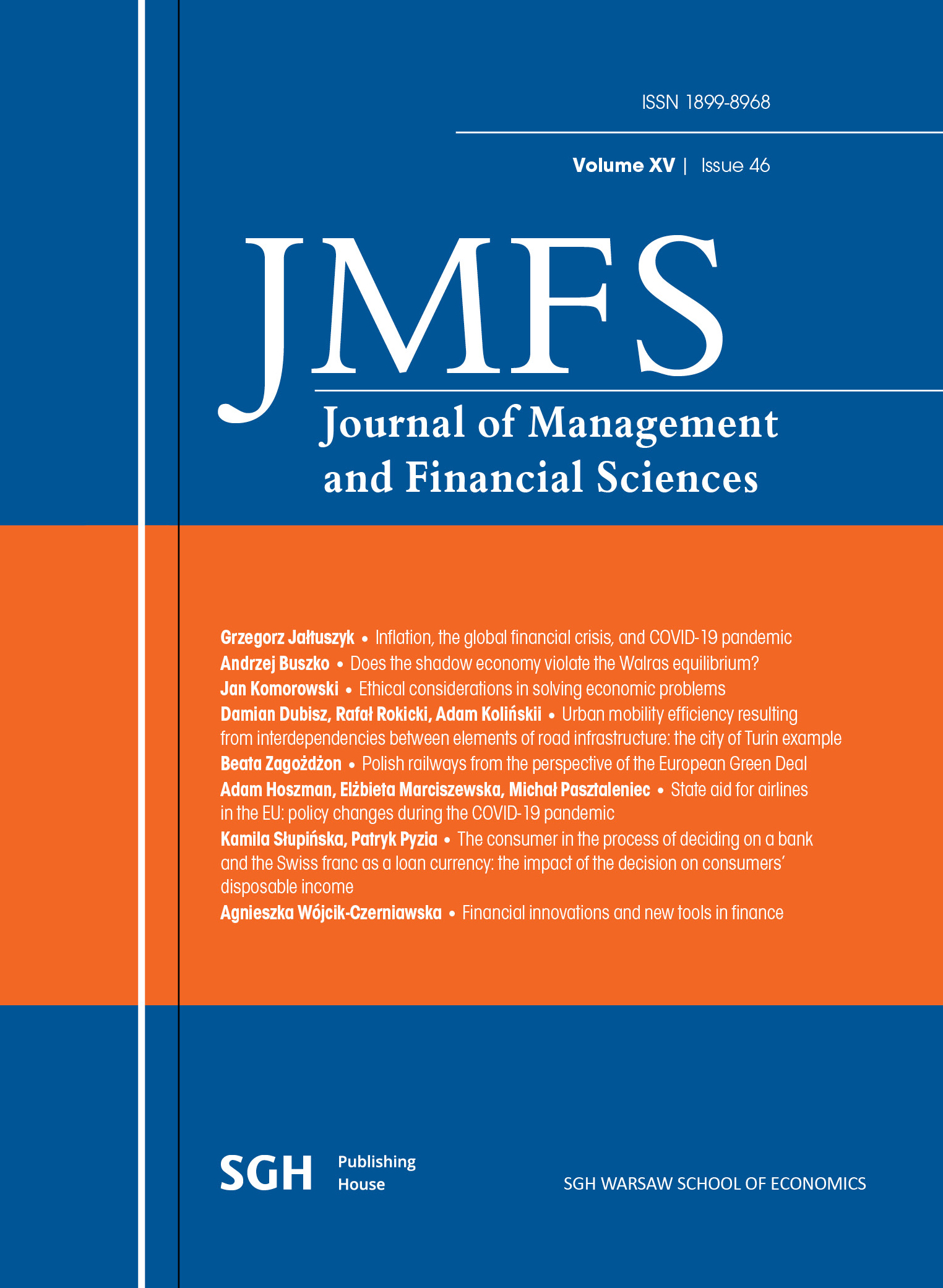State aid for airlines in the EU: policy changes during the COVID-19 pandemic
Main Article Content
Abstract
The paper analyses the developments in the EU state aid policy as a result of the COVID-19 pandemic breakout. The general framework for state aid in the EU was presented. Based on a case study analysis of selected airlines that benefited from state aid following the COVID-19 crisis, changes in the European Commission approach were identified. In general, investigation of arrangements between the state aid cases is a complex (and thus often lengthy) process. The outbreak of the COVID-19 pandemic was a challenge for EU member states and the European Commission as well due to the unexpected, turbulent, and very profound nature of the crisis. It made it necessary to look for new or revised policies for state aid to respond quickly and keep airlines afloat in times when the flow of revenue was practically stopped. One of the key issues that needed to be addressed was inflexibility and lengthiness of state aid approval processes. To this end, additional guidelines were introduced to make the state aid policy of the EU more flexible. This way member states could respond to the ongoing developments in a more targeted and objective-oriented approach, which possibly made state aid more efficient. It should be stressed that it could have been achieved without changes to pre-existing legislation and by adjusting executive guidelines instead.
Downloads
Article Details
References
2. Albers, S., Rundshagen, V. (2020). European airlines strategic responses to the Covid-19 pandemic (January-May, 2020). Journal of Air Transport Management, 87.
3. Alves, A.M., Brousseau, E., Yu-Cheong Yeung, T. (2021). The dynamics of institution building: State aids, the European commission, and the court of justice of the European Union. Journal of Comparative Economics, 49, pp. 836–859.
4. Barbot, C. (2006). Low-cost airlines, secondary airports, and state aid: An economic assessment of the Ryanair – Charleroi Airport agreement. Journal of Air Transport Management, 12, pp. 197–203.
5. Bartniczak, B. (2017). Market failures as premises of granting state aid. Economic and Environmental Studies, Vol. 17, Iss. 3, Opole University, pp. 475–489.
6. Burghouwt, G., de Wit, J.G. (2015). In the wake of iberalization: long-term developments in the EU air transport market. Transport Policy, 43, pp. 104–113.
7. Crocioni, P., Newton, Ch. (2007). State Aid to European Airlines. A Critical Analysis of the Framework and its Application. In: D. Lee (Ed.), The Advances in Airline Economics, Vol 2, The Economics of Airline Institutions, Operations and Marketing. Elsevier, p. 151.
8. Forsyth, P., Guiomardc, C. (2019). The economic approach to subsidies for foreign airlines. Journal of Air Transport Management, 74, pp. 47–53.
9. Jiang, Z., Kim, K.A., Zhang, H. (2014). The effects of corporate bailout on firm performance: International evidence. Journal of Banking & Finance, 43, pp. 78–96.
10. Martin-Domingo, L., Martin, J.C. (2022). The Effect of COVID-Related EU State Aid on the
11. Level Playing Field for Airlines. Sustainability. 2022, 14, p. 2368.
12. TOR (2020). Linie lotnicze. Pomoc publiczna w czasie pandemii. Rynek lotniczy. Zespół Doradców Gospodarczych TOR, pp. 1–12.
Legal documents
1. European Commission (2014). State aid: Commission adopts new guidelines on state aid to airports and airlines (Aviation Guidelines) – Frequently asked questions, Memo, Brussels 20 February 2014 Retrieved from: https://ec.europa.eu/commission/presscorner/detail/en/MEMO_14_121 (accessed: 10.10. 2022).
2. European Commission (2020). Temporary Framework for State Aid Measures to Support the Economy in the Current COVID-19 Outbreak, 2020/C 91 I/01 Retrieved from: https://eur-lex.europa.eu/legal-content/EN/TXT/?uri=OJ%3AJOC_2020_091_I_0001 (accessed: 10.10.2022).
3. European Commission (2021). Decision SA.59158 (2020/N) Covid-19 – Aid to LOT Polish Airlines, JOCE C/260/2021
